 The overall science fiction themes of Planet Comics typically followed whatever trend was the most popular at the time. Early in the series the stories were verging on the silly, reflecting the Hugo Gernsback-style of science fiction, or "Scientifiction" that was prevalent in the pulps. Space ships were simple reaction rockets that flew through the cloudy, ether-filled space between the stars that arrived at their distant destination in hours. Mysterious rays that performed miraculous feats of destruction were fired with precision from hand-held weapons. Atomic steam powered the giant cities while prop planes soared between monolithic buildings. All very charming and a product of the times. But grumblings among fandom existed even then as readers often complained about the nigh-magical feats of machines and the impossible actions derived from simplified and fanciful physics. These type of complaints from readers would go virtually unanswered for decades until the secrets of how fictional and impossible science worked by a different comic book company that published their Official Handbook of the Marvel Universe.
The overall science fiction themes of Planet Comics typically followed whatever trend was the most popular at the time. Early in the series the stories were verging on the silly, reflecting the Hugo Gernsback-style of science fiction, or "Scientifiction" that was prevalent in the pulps. Space ships were simple reaction rockets that flew through the cloudy, ether-filled space between the stars that arrived at their distant destination in hours. Mysterious rays that performed miraculous feats of destruction were fired with precision from hand-held weapons. Atomic steam powered the giant cities while prop planes soared between monolithic buildings. All very charming and a product of the times. But grumblings among fandom existed even then as readers often complained about the nigh-magical feats of machines and the impossible actions derived from simplified and fanciful physics. These type of complaints from readers would go virtually unanswered for decades until the secrets of how fictional and impossible science worked by a different comic book company that published their Official Handbook of the Marvel Universe.
As the elements of science fiction evolved so did the various stories in the Planet Comics title as a part of that evolution. The earnest naivete of the pulps gave way to a relative realism as technology prompted greater speculation as to what the future may be like. As the public was increasingly educated as to the true nature of the universe the more wild fictional elements were reigned in and fictional space travel was made ever more local and confined to the greater solar system. The settings of science fiction became more "plausible" even as it remained just as fantastic and impossible.
As the universe became more complex the story elements became inversely simplified. No longer did ships zoom to other galaxies and visit Cymradia or Mongo. Adventurers typically remained within the solar system as there were suddenly plenty of stories to be told featuring the wild, heavily populated planets of Mars, Venus and Saturn. Eventually these ideas would also fall to the wayside as readers recognized that Pellucidar and the feudal Mars of John Carter were unlikely in the "real fictional universes". Currently these problems of unlikelihood are solved by the concept of alternate realities and other dimensions such as DC Comics' Skartaris. The next entry in the Futura Saga from Planet Stories #54 (May 1948) is an example of the evolution towards "unlikely realism" in science fiction. The ideas of far-flung, magical planets like Cymradia are left behind in favor of Space Pirates plying the star lanes of Venus and oppressing the fish-like people of that planet.
Chapter 12 of the Futura Saga finds our heroine continuing her journey into space, fleeing the world she inadvertently helped destroy in Chapter 11. Not having learned anything from her previous efforts to free oppressed people, Futura pledges to aid the Venusians in their struggles against a piratical tyrant. The art is a pleasing step up from the previous chapters and is a return to the style of the early Futura chapters and reminiscent of the Buck Rogers and Prince Valiant strips, though there are more than the usual number of gratuitous Good Girl Art poses than in previous entries.
Happily, Futura does some serious butt-kicking in this chapter. Her fight scene is made made all the more interesting in that it was way back in 1948 that the creators chose to break the tiresome cliche of the "Helpless Captive" that still permeates most action fiction to this day. The cliche of the prisoner who nonetheless has access to weapons but doesn't use them is a sore point for me when watching a movie or reading the scene in a novel or comic book (I'll expound on that after Thanksgiving in a My First Book of Noir post, Jenny vs. The Crime Empire). It is so darn silly and is a sign of lazy scripting and false drama. I rank it right up there with the "Lucky Break" (When the weapon held by the bad guy jams right when he has the drop on the hero).
Page five is an utter delight. Enjoy.
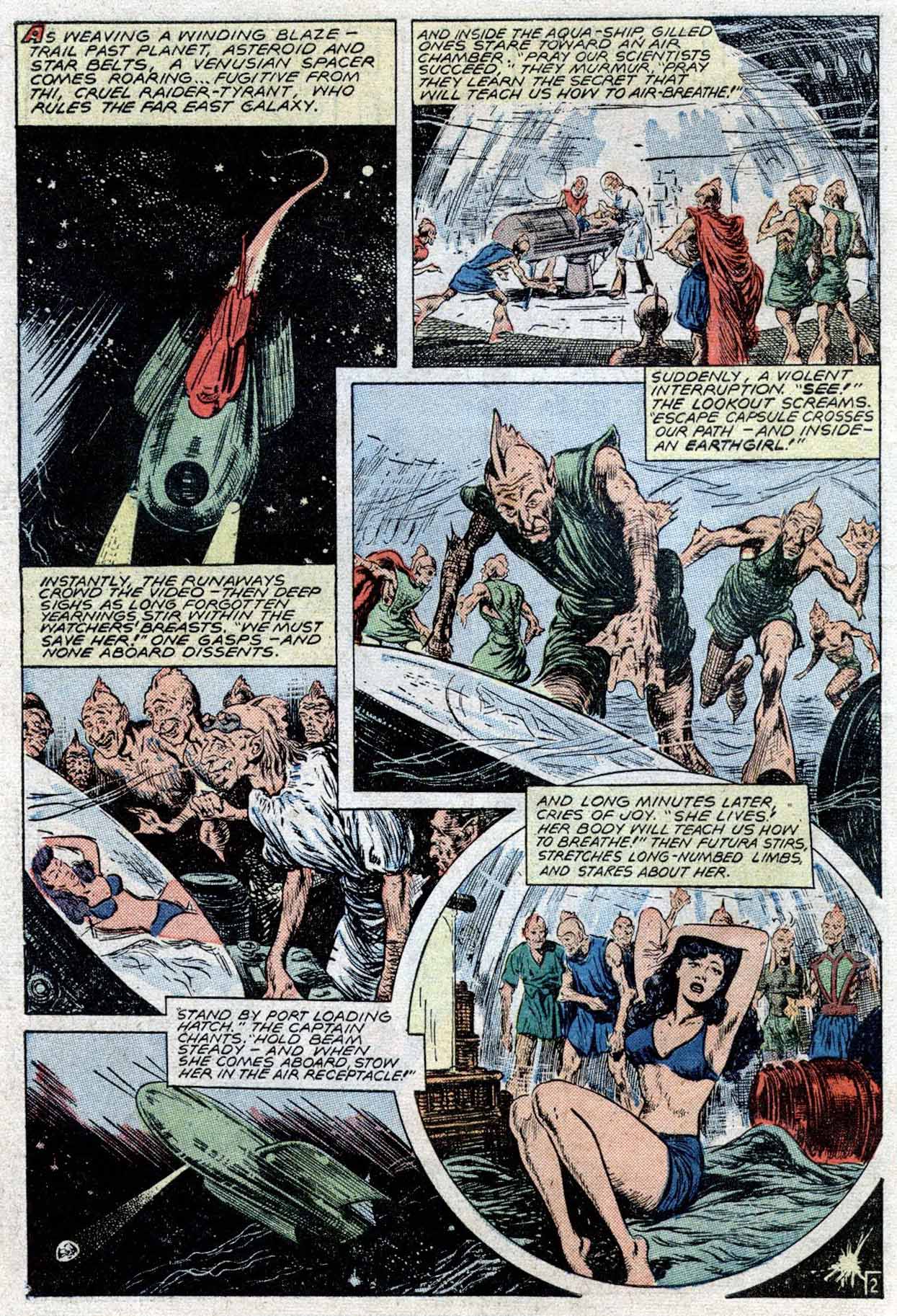
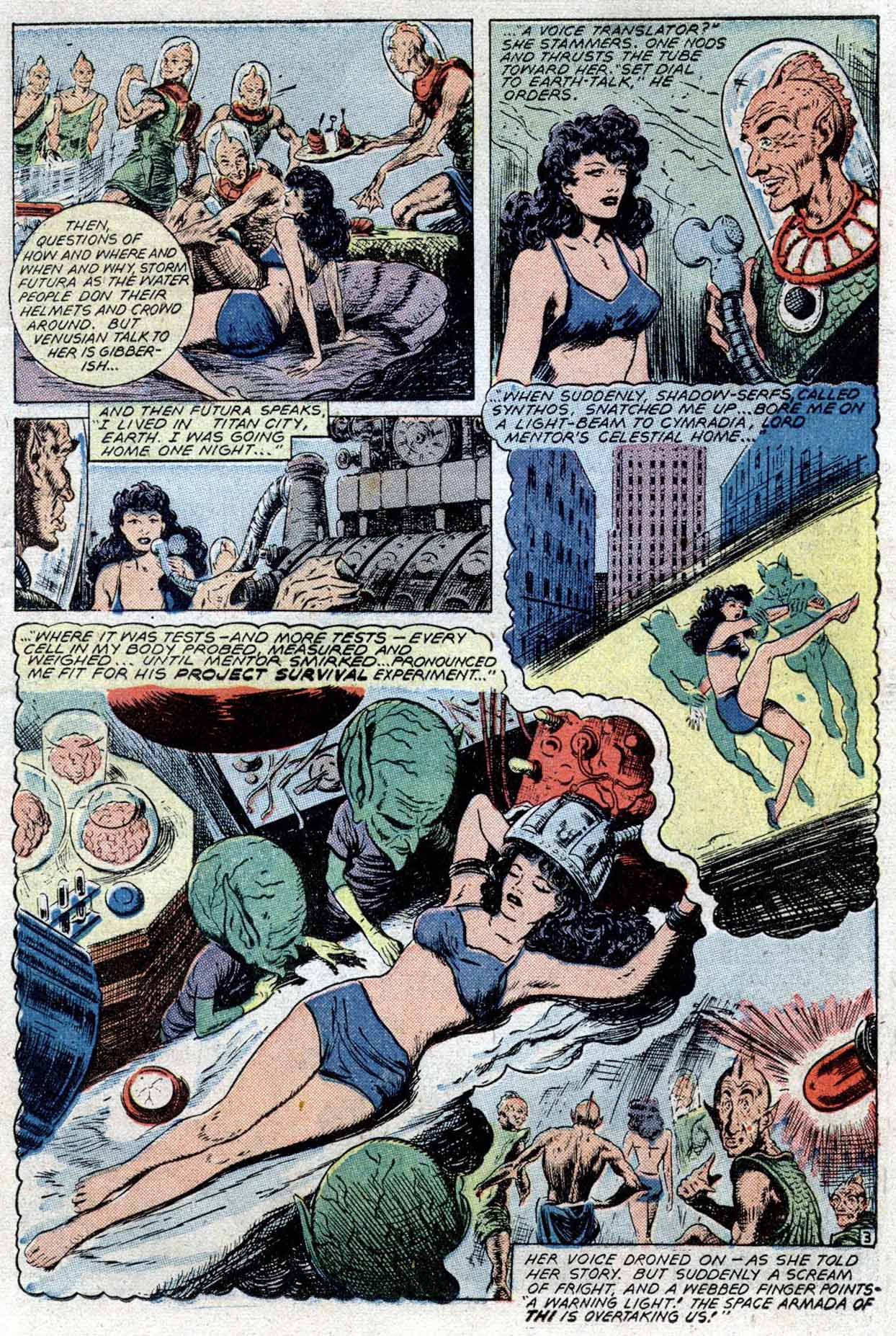
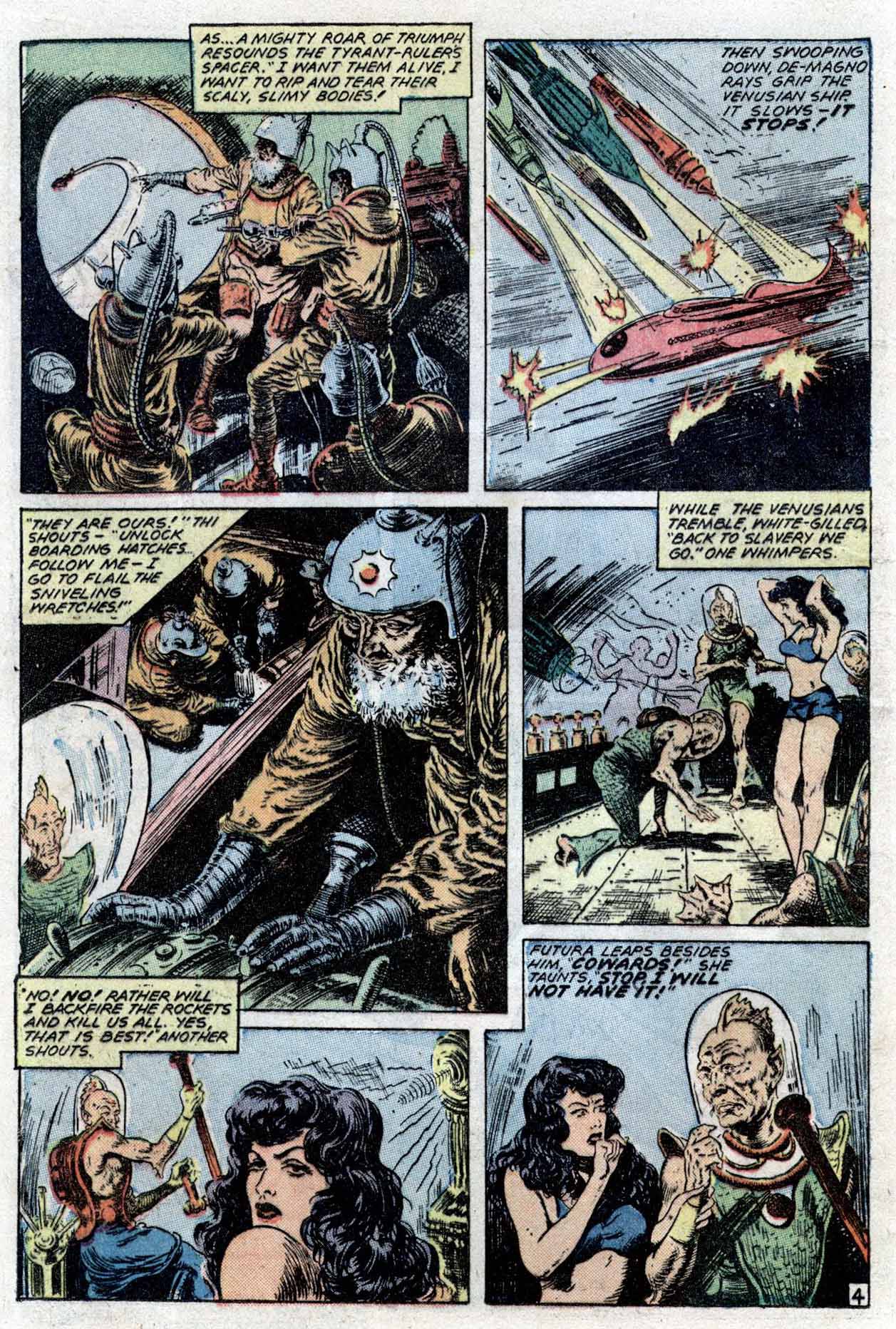
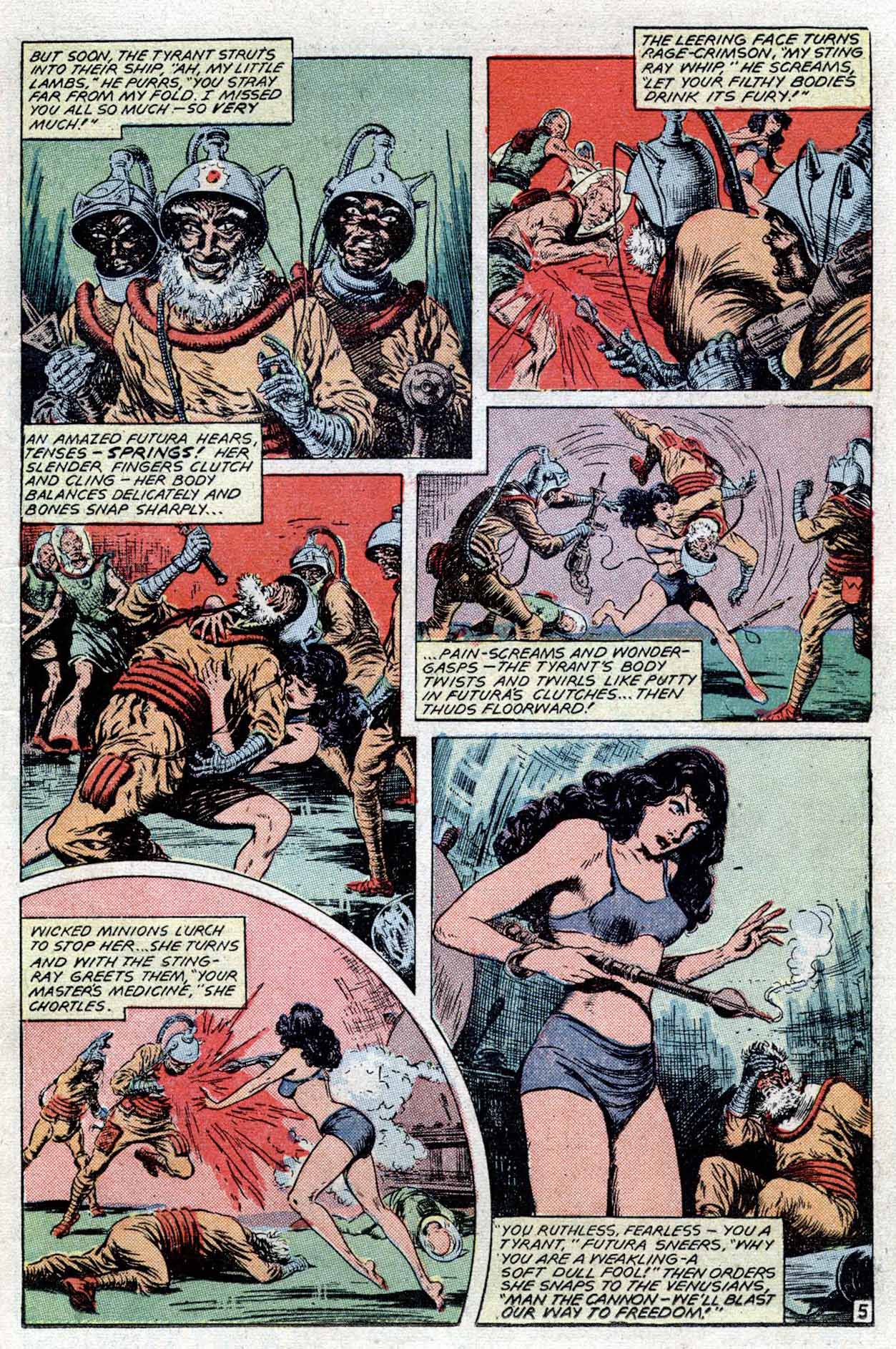
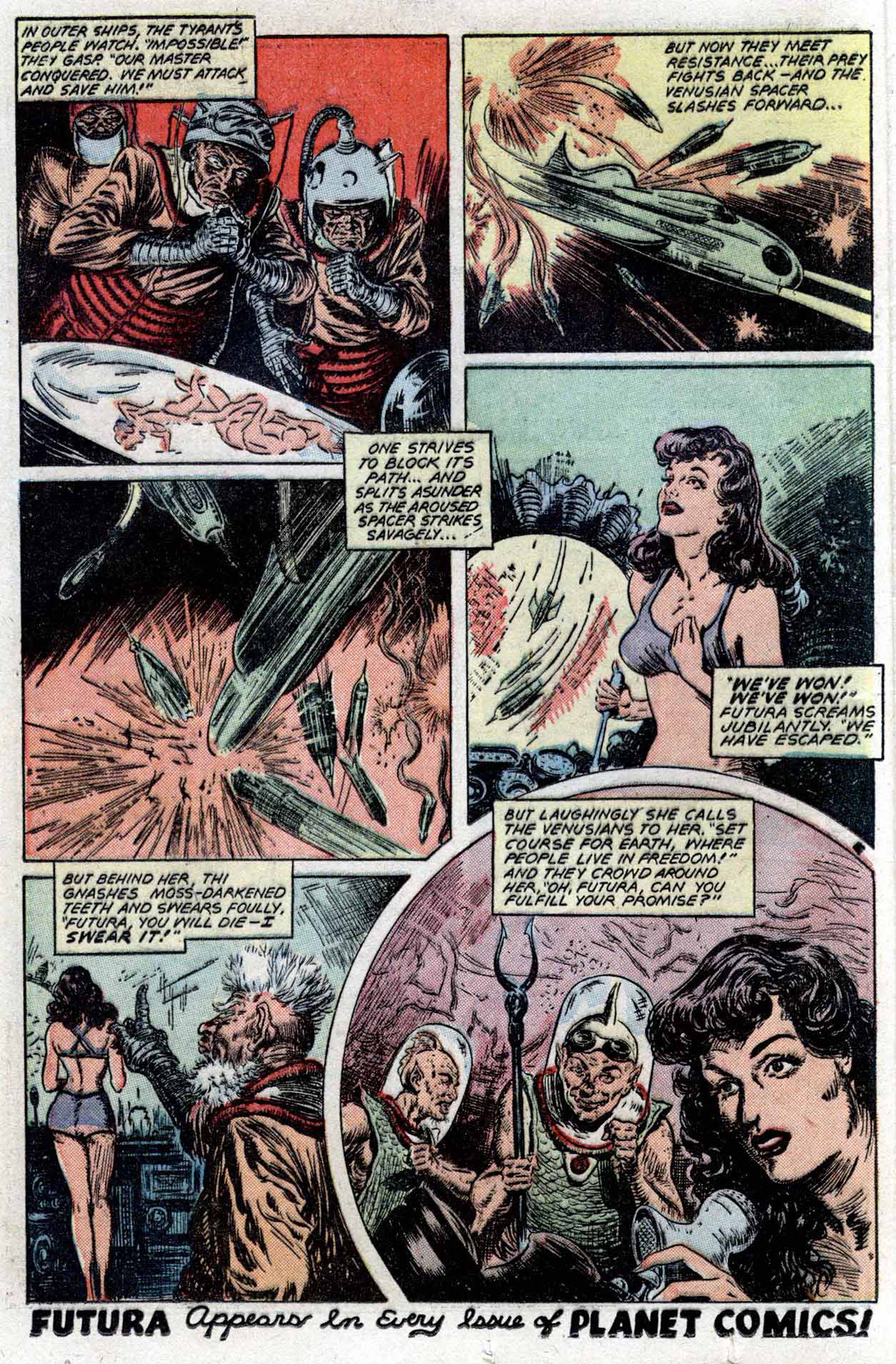
Wednesday, November 25, 2009
Futura - Chapter 12
Posted by
Sleestak
at
11/25/2009 10:00:00 AM
![]()
![]()
Labels: futura, good girl art, planet comics, Pulps, women in science fiction
Subscribe to:
Post Comments (Atom)

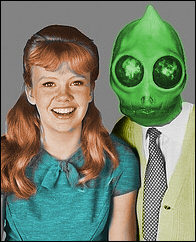

























Very nice entry! And as you note, the art is a marked improvement over the last few chapters.
ReplyDeleteHugo had very precise ideas of what science fiction should be and was very vocal about those opinions. They are a part of a recent biography. For more information about Hugo Gernsback check out a new biography available on Amazon.
ReplyDeleteThe document was found by me when we closed down Gernsback Publications in 2003. It was an old ms that I edited and produced as a book.
Follow the link and you can go to the book and thanks to Amazon’s “look inside” feature, you can even get an idea of what it covers.
http://www.amazon.com/Hugo-Gernsback-Well-Ahead-Time/dp/1419658573/ref=ed_oe_p
Hope you find it interesting.
For more information feel free to contact me, Larry Steckler, at PoptronixInc@aol.com
Yeah, what the heck? Surely even the (kid?) audience of 1948, who'd been buying it an issue at a time from month to month, would have noticed how sudden the shift in art was. And that is one massive gap in both quality and style. In comparison, the last couple of issues look like they were cranked out overnight.
ReplyDeleteHeck, yeah. Xmas is coming!
ReplyDeleteHowcome shes flying a rusty red rocket now? not a flying thermonic valve.? Is the break in continuity and artist down to the magic sword bit being filler?
ReplyDelete